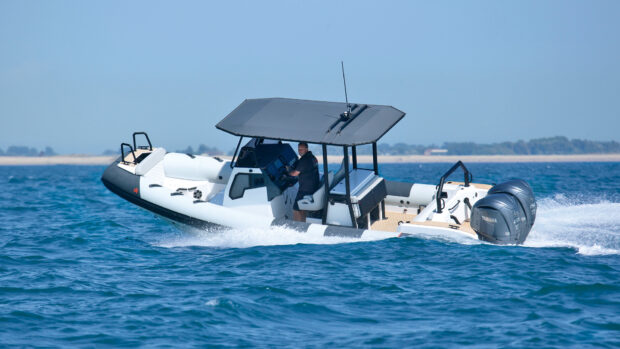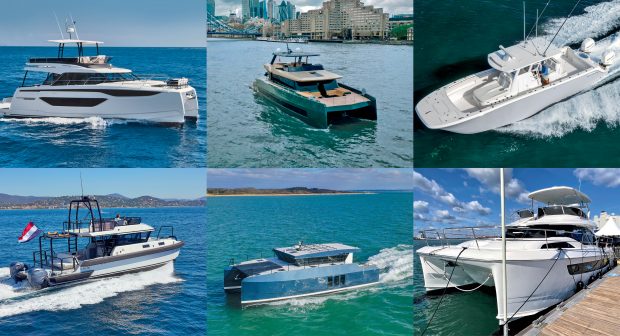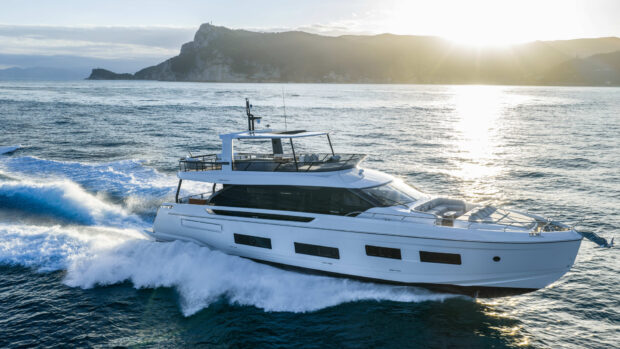Stephen Hubbard is living proof that you can mix business with pleasure after buying a custom built Cockwells then investing in the yard and restoring a Dunkirk Little Ship.
Stephen Hubbard never intended to buy a boat when he visited the Southampton Boat Show in 2013, let alone a boat yard. But he made one fatal mistake – speaking to Dave Cockwell.
The eponymous owner of Cockwells boat yard in Mylor, Cornwall, is a hugely engaging character and his enthusiasm for boats is positively infectious, as Stephen soon found out to his cost.
“He showed me one of his beautiful custom-built 32ft wooden launches,” recalls Stephen. “I was utterly mesmerised and fell in love with the idea of having one built for me. Within half an hour of talking to Dave, he’d convinced me to build a 33ft version.”
Article continues below…

Hardy 42 Hybrid yacht tour: This sturdy liveaboard cruiser has a diesel-electric heart

Dunkirk Little Ship restoration: The amazing story of a boat that survived both World Wars
Thankfully, it turned out to be one of Stephen’s better mistakes and the resulting boat, named Impulsive for reasons that need no explanation, proved to be the start of an enduring friendship with the yard owner.
“The build process itself was a wonderful experience and I became firm friends with Dave so when the chance came to buy into the boat yard, I couldn’t resist it.”
Stephen is now a shareholder and director of Cockwells, helping to expand it from a niche builder of handcrafted wooden boats into a fast growing manufacturer of everything from the Duchy range of semi-custom GRP gentleman’s cruisers to bespoke superyacht tenders.

Stephen’s relationship with Cockwells began when the company built this custom Cockwells launch for him
Last year it took another big leap forward by purchasing the Hardy brand and relaunching its range of trawler style motoryachts with the option of hybrid propulsion and new interiors featuring Cockwells’ legendary woodwork.
Once more unto the beach
You’d think that might be enough to satisfy Stephen’s passion for all things boat related but he wasn’t done yet. “Dave once said to me that a man can never have too many boats and I can vouch for that from personal experience,” he says ruefully. This time around his downfall was a visit to the Henley Classic Boat Festival in 2017.
“I love classic boats from the 1930s anyway but the fleet of 10-12 Dunkirk Little Ships on display really appealed to me. It’s such a remarkable story (in 1940 around 850 small craft helped in the evacuation of 331,000 allied troops from the beaches of Dunkirk, around 75 of which are still afloat today) and here was a chance to own a slice of history.”

After buying into the company Cockwells then restored this Dunkirk Little Ship for him
However, finding the right one to buy proved rather more challenging. “I love projects and with my involvement in Cockwells it made sense to find one that needed sorting out so that I could restore it to its former glory for my own use but also for posterity.
“I did a bit of research and came across Mada, a 34ft Little Ship built in 1936 by the Elkins yard in Christchurch. She was originally called Fleury II and was one of two boats built for the Fleuret family.
“Both took part in Operation Dynamo but only this one came back. It wasn’t for sale at the time but everything about it stood out as the perfect boat for me. It was pretty, it was the right size and the overall condition looked fairly good so it was a nice manageable project.”
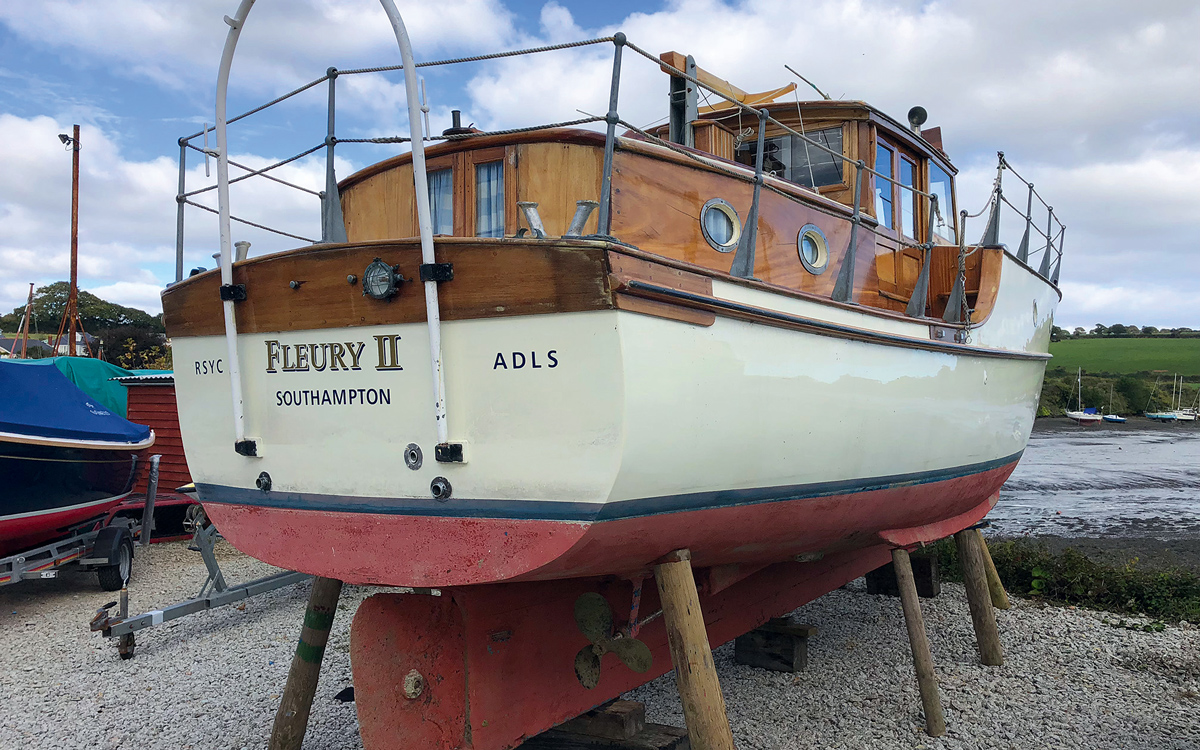
The initial stripdown commences, with Cockwells’ craftsmen overseeing the project
That just left the small issue of convincing the owner to part with it. “I found out that Gillian Nahum at Henley Sales and Charter had sold the boat three years earlier so I rang her and said I was interested in buying it.
“Initially the current owner wasn’t interested in selling, he loved the boat too much even though he didn’t appear to be getting much use out of it and I get the impression it was becoming a bit of a challenge to stay on top of the upkeep. Eventually, after 12 months of negotiations, he agreed to sell.”
Before putting Mada on a lorry to Mylor, Stephen took it for a short run along the river from Chertsey to Harleyford. “The hull was in pretty good shape but the bilges were a mess.

They were suitably impressed by the condition of the keel and hull
“It had been re-engined with a pair of old BMC diesels from London taxis and almost as much fuel seemed to be leaking into the bilges as was going into the engines! The smell of diesel seemed to be permanently impregnated into the hull.”
Engines aside, Stephen’s mission was to restore her exterior as close to the original layout and looks as research allowed. But below decks he wanted to make her into a comfortable four-berth cruiser for him and his family to enjoy while preserving as much of the style and structure as possible.
Cockwells’ team of experienced craftsmen were the perfect match for the job, combining traditional boat building skills with modern technology to create a working cruiser with the original looks and style of a 1930s classic.

Most of the mahogany frames and strip planking were still original with only the occasional plank needing to be replaced. The engines and deck were a different story, however.
Stripped bare
The first job was to strip out the engines to clean the bilges and check what state the hull was in. The mahogany frames and strip planking were in good condition having been the subject of considerable attention over the last 15 years. Rather more remarkable was that she was still running on her original 4in-wide oak keel and cast iron ballast.
Along with a pair of smaller bilge keels, this is what enabled her to creep around Christchurch’s shallow harbour while still being seaworthy enough to make the crossing to Dunkirk.
Cockwells shipwright Mark Curnow was equally determined to maintain this link to the past. “One of the highlights of Fleury II is that her original keel is still intact and her backbone can be seen in its original state. This is a tribute to the fine craftsmen who built her.”

The old BMC engines were replaced with a pair of brand new 40hp Yanmars
Sadly, the decks were not in a good state, a full rebuild was needed to ensure they remained watertight as well as improving their structural integrity to support the staysail’s mast.
Stephen Hubbard takes up the story. “When I bought her, the staysail was stepped on the aft cabin roof even though there was no additional strengthening to account for this. When we investigated further we found the original mast footing just behind the forward hatch and decided to restore it to its original position.”
Mark Curnow’s solution was to use modern build techniques that would maintain the same aesthetics but improve their durability. “Originally, solid strips of thicker wood would have been used in the deck’s construction and steamed into place, but today we can laminate thinner strips in situ to repair tricky areas.

Period navigation lights look the part
“We have maintained the aesthetics of the deck but gained durability by using marine ply and fibreglass epoxy where traditionally wooden boards with painted canvas would have been used.”
The deck fittings, stanchions and one of the aft cabin sides also had to be replaced to make good a previous repair attempt, while the wheelhouse and skylight just needed local repairing, stripping back and revarnishing to bring them back to life.
Needless to say the engines were not worth salvaging, being neither original nor modern, so Stephen chose to replace them with a pair of new 40hp Yanmars. These efficient, direct-injection diesels are much quieter and cleaner-burning than the old BMCs, making for a more civilised and reliable cruising experience.

The settee berths were refreshed with new upholstery and new strips of mahogany were added to make backrests
She’s electric
The interior received a sympathetic makeover to make her more user-friendly while preserving the look and feel of a 1930s classic. All the electrics were replaced and where possible hidden away, but this enabled Stephen to lose the original gas appliances in favour of electric ones.
“I didn’t want gas on board for safety reasons,” explains Stephen. “We now have an all electric hob and combi oven in the galley.” Even the period light fittings have been upgraded to LED to reduce energy consumption without compromising style.
It’s a similar story with the two settee berths which retain their original structures but have been refreshed and enhanced with new upholstery and cushions. Stephen also decided to add varnished strips of mahogany along the hull sides to keep the cushions away from the hull sides while preserving the period look and feel.

The wheelhouse overhaul included adding soundproofing under the sole
The wheelhouse was also the subject of a significant but subtle overhaul, adding soundproofing under the sole and hiding all the nav gear out of sight except for the small MFD screen. The result is a boat that looks like an original but also works as a family cruising yacht. The final step was restoring her name back to Fleury II in honour of her first owners.
“As we discovered during sea trials, she’s a very seakindly craft,” says Stephen. “The repositioned staysail really helps to pin the bow down and stop the hull from rolling. I was really looking forward to taking her across the Channel as part of the Association of Dunkirk Little Ships’ (ADLS) 80th anniversary celebrations in May 2020.”
Ace of Clubs
Sadly, by the time her restoration was complete Covid-19 restrictions meant the event had to be cancelled as has been the case again this year. But Stephen remains upbeat for the future of the club as well as his own enjoyment of Fleury II.

The beautiful skylight was in good condition and just needed localised repairs before being stripped back and revarnished
“I haven’t just bought a boat, I’ve joined the most exclusive yacht club in the world. There are only 75 Dunkirk Little Ships still afloat and I am lucky enough to have one of them. People comment on what a lovely boat she is. She was even featured as a half-page photograph in The Times.”
Satisfying enough to assuage Dave Cockwell’s assertion that a man can never have too many boats? “Absolutely. I’ve owned quite a few boats over the years but along with Impulsive, she is one of the two boats I plan to keep for life.”
First published in the July 2021 issue of MBY.
If you enjoyed this…
Be first to all the latest boats, gadgets, cruising ideas, buying advice and readers’ adventures with a subscription to Motor Boat & Yachting. Available in both print and digital formats, our monthly magazine will be sent directly to your home or device at a substantial discount to the usual cover price. See our latest offers and save at least 30% off the cover price.

The mission was to retain as much of the exterior as possible

The aft cabin makes a cosy retreat for overnight stays
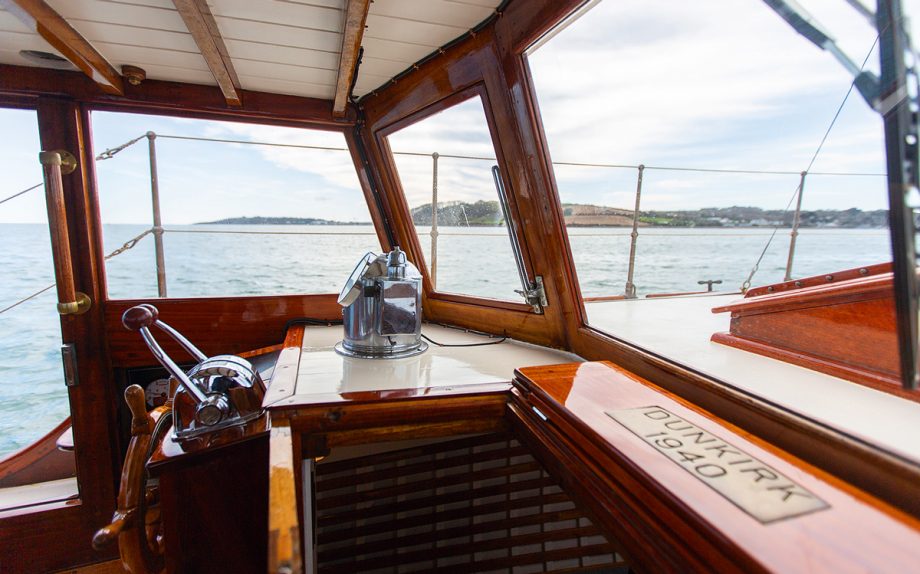
Brass plaque commemorates her role in Operation Dynamo

Immaculate varnish work

The wheelhouse has retained the style of a period yacht, with all the modern nav gear hidden out of sight








